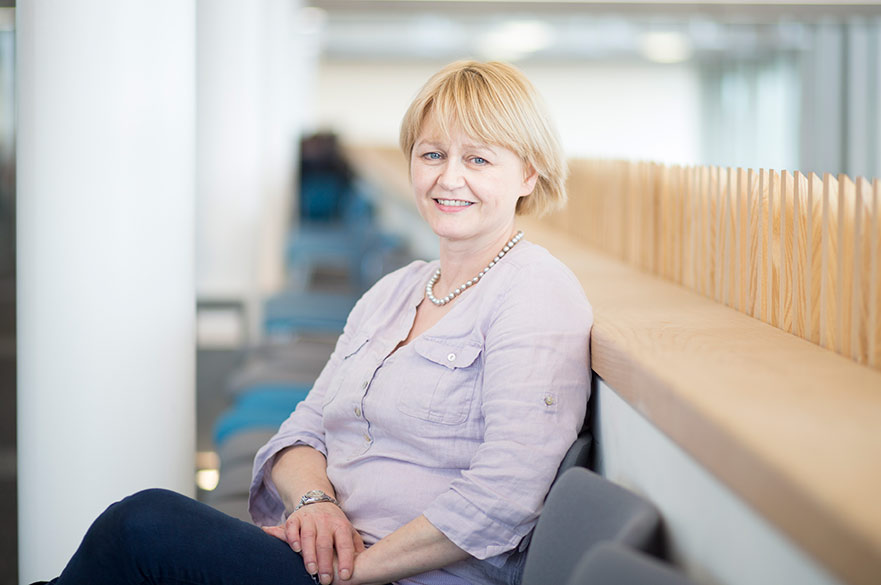Role
Dr Miller is course leader for the MSc in Forensic Science and module leader for Forensic Casework Examination (BSc Year 2) Suspicious Death Investigation (BSc Year 2) and Forensic Bioarchaeology (MSc). She also teaches on Advanced CSI (BSc Year 3). She supervises up to six BSc final year research projects every year and currently also has three MSc student research projects ongoing. Dr Miller is also Year 3 tutor for BSc Forensic Science and MSc Forensic Science course tutor.
Dr Miller helps train police personnel in crime scene investigation and undertakes forensic casework UK wide, primarily in the field of stomach contents analysis, which is her main research focus, but also in the search for and recovery of human remains in problematic circumstances. She has presented her evidence in Crown Court situations on numerous occasions.
Career overview
2016- Current: Senior lecturer in Forensic Science at Nottingham Trent University
April 2010- July 2016: Head of Forensic Bioarchaeology Unit, York Archaeological Trust (UK wide) and Honorary Research Fellow and Lecturer, University of Glasgow.
Lead scientist in a bioarchaeological research laboratory undertaking archaeological projects and forensic casework UK wide. Regular police training.
Teaching on seven different UG and PG courses. UG and MSc dissertations co-supervised. Research links with the University of Glasgow Departments of Archaeology, Medicine and Forensic Medicine in relation to stomach contents analysis and evaluating the potential of diatoms in cases of suspected drownings.
Feb 2002-Dec 2009: Forensic & Environmental Projects Manager, Glasgow University Archaeological Research Division (GUARD). Bioarchaeological and forensic casework UK wide, plus teaching, police training and fieldwork.
August 1997-Jan 2002: Bioarchaeological specialist, GUARD. Personal forensic casework and teaching, fieldwork, analysis and interpretative reporting.
Jan 1996- Jun 1996: Fixed term temporary lecturer at University of West of Scotland teaching bioscience at HO level during doctoral studies.
Research areas
- Stomach contents analysis to determine last foods consumed, duration, timings & other events for criminal investigation
- Gastric transit and digestion in infancy for forensic application
- Forensic archaeology: methods for search & problematic human remains recovery
- Refining interpretation of non-standard & environmental forensic evidence
- Scene examination including interpretation of taphonomy, environmental indicators of contact, duration & timings
- Opportunities arise to carry out postgraduate research towards an MPhil / PhD in the areas identified above. Further information may be obtained on the NTU Research Degrees website https://www.ntu.ac.uk/research/research-degrees-at-ntu
External activity
- Professional Member of the Chartered Society for Forensic Sciences(http://www.csofs.org/)
- Professional Member of the Chartered Institute for Archaeologists (http://www.archaeologists.net/)
- Member of the Association for Environmental Archaeology(http://envarch.net/)
- National Crime Agency (NCA) database: Recognised expert in forensic archaeology, search and recovery of human remains, non-standard evidence capture, duration and interpretation of events and stomach contents analysis (numerous Police commendations on file)
- Home Office Forensic Archaeology Professional Standards Committee member and co-author
- Member and Competency Assessor for the Expert Panel of the CIfA Forensic Archaeology Group
- Member of START (Home Office Search Technology Academic Research Team)
- Presentations given in Toronto, The Hague & across the UK in forensic archaeology, bioarchaeological profiling and stomach contents for criminal investigation
- Taught police professionals UK wide regularly since 1997 including every Crime Scene Manager trained in Scotland since 1998 and numerous Police Search Advisors and Dog Handlers courses.
Sponsors and collaborators
- West Midlands Police Criminal Investigation Department
- West Midlands Police search advisors
- University of Glasgow Department of Anatomy
- Police Scotland Detective Training Centre
- The Home Office
- University of Bradford Department of Archaeology
Publications
Miller J.J. 2017. ‘Forensic Botany, Familiar Techniques and New Advances’. Ch 14 in: Schotsmans, E. Márquez-Grant, N. & Forbes S. (eds.) Taphonomy of human remains: forensic analysis of the dead and depositional environment. Wiley-Blackwell.
Miller J & Ramsay S 2016. ‘Environmental Evidence’. Sections throughout Atkinson JA (ed.) Ben Lawers: An Archaeological Landscape in Time. Scottish Archaeological internet Reports 62
Miller J., Ramsay, S., Alldritt, D. & Bending, J. 2016. ‘Bay of Firth Environments from the 2nd to 4th Millennium bc: the evidence from Stonehall, Wideford Hill, Crossiecrown, Knowes of Trotty, Varme Dale and Brae of Smerquoy’ pp. 495-526 in: Richards, C & Jones, R (eds.) The Development of Neolithic House Societies in Orkney. Investigations in the Bay of Firth, Mainland, Orkney (1994-2014). Oxbow Books, Oxford. ISBN 978-1-90968-689-2
Miller J.J. & Thurley D.S.K. 2013. ‘Recovery of Human Remains’, pp. 372-377 in: Siegel J.A. & Saukko P.J. (eds.) Encyclopedia of Forensic Sciences, Second Edition, vol. 3, Waltham Academic Press.
Miller, J. & Ramsay, S. 2011. ‘Botanical material from the O’Dell excavation’ in Barrowman, R.C. The Chapel and Burial Ground on St Ninian's Isle, Shetland: Excavations Past and Present. Series: Society for Medieval Archaeological Monographs 32, Society for Medieval Archaeology, Wakefield, UK. ISBN 9781907975462
Housley, R A, Blockley, S P E, Matthews, I P, MacLeod, A, Lowe, J J, Ramsay, S, Miller, J J, Campbell, E N 2010 ‘Late Holocene vegetation and palaeoenvironmental history of the Dunadd area, Argyll, Scotland: chronology of events’ Journal of Archaeological Science, 37, 577-593.
Miller, J. 2009. Stomach Contents in Criminal Investigation. Technical Paper for the Home Office Forensic Regulator and UK Police Forces.
McDonald S.W. & Miller J.J. 2008. ‘Animal bones referred for forensic anthropological identification in the West of Scotland’. Clinical Anatomy 21: 809-844.
